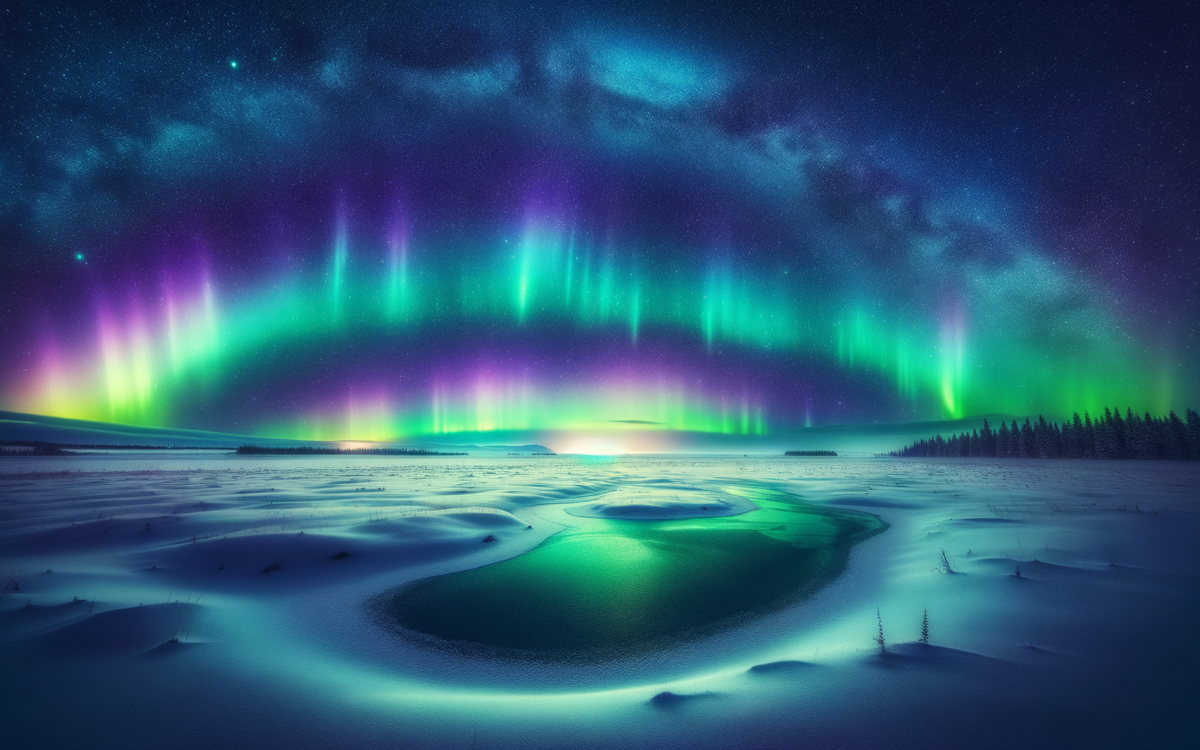A Cosmic Display: Your Guide to Catching the Northern Lights This Tuesday
-
A moderate G2 geomagnetic storm is predicted for Tuesday night, offering a fresh chance to witness the northern lights, primarily for inhabitants of the northern United States.
-
Visibility of the aurora may be enhanced using smartphone cameras, which can detect fainter light than the human eye.
-
The increased frequency of aurora activity is linked to the sun nearing its solar maximum, part of its natural 11-year cycle of activity.
What’s Happening in the Cosmos?
The night sky is prepping itself for another spellbinding show this Tuesday, but it seems this time the audience will be a bit more exclusive. The upcoming solar activity, though not as robust as the dazzling displays seen over the weekend, still promises to grace the northern horizon with the ethereal dance of the northern lights. It appears that Mother Nature is dialing down the intensity from an “extreme” G5 to a more “moderate” G2 storm. This means the spectacle will be best viewed from the northern states, with the visibility line not stretching as far south as before.
Maximizing Your Viewing Experience
For those eager to catch a glimpse of this natural wonder, the Space Weather Prediction Center has sketched a forecast map that outlines potential viewing spots. If you find yourself within the Pacific Northwest, Upper Midwest, Great Lakes, or the far Northeast, you’re in for a treat. However, securing a spot away from city lights and under clear skies will significantly increase your chances of witnessing the aurora in all its glory.
Technological Aids to the Rescue
In an exciting twist, your smartphone might just become your best ally in this cosmic quest. Modern phones are equipped with lenses that surpass the human eye in light sensitivity, enabling them to capture the faint glows of the aurora that might otherwise remain invisible. So, if the lights are playing coy, don’t hesitate to let your phone have a peek!
Understanding the Celestial Phenomenon
Why the sudden uptick in aurora activity? Well, it’s all thanks to our star at the center of the solar system inching closer to its solar maximum. This period marks a peak in the sun’s activity, flipping its magnetic poles and freckling its surface with sunspots. These sunspots become the birthplace of coronal mass ejections (CMEs) – colossal explosions of plasma and magnetic material. When these CMEs collide with Earth’s magnetic field, they trigger the magnificent light shows we call the northern lights.
As the sun continues its cycle, expect the chances of witnessing these celestial dances to remain high. It’s a cosmic reminder of the dynamic and ever-changing nature of our universe.
Jon’s Take
While the universe unfolds its mysteries one solar cycle at a time, we’re reminded of our small yet significant place within it. The northern lights are not just a spectacle but a connection to the cosmic dance that continues beyond our earthly concerns. Whether through the naked eye or the lens of a smartphone, catching a glimpse of this astral ballet invites us to ponder our connection to the vast, starry expanse. And remember, the truth isn’t just out there – it’s right here, in the shared moments of wonder and the collective gaze upward.
Original Article




